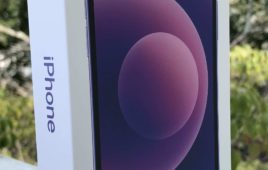(Image Source: BTIG Research)
AT&T began updating connectivity icons on certain smartphones to display a “5GE” logo when users connect to certain parts of the carrier’s network delivering faster speeds, but some have criticized the marketing push as “Fake 5G.”
However, BTIG’s Walter Piecyk in a Monday blog post said the more important takeaway is that AT&T is deploying 60 MHz of new spectrum this year, which “if implemented properly” should mean subscribers experience significantly faster data speeds and better performance when the 5GE icon shows up.
Piecyk says 5GE gives AT&T a chance to best rival Verizon.
In late December, AT&T announced the launch of its mobile 5G network, but service is first only available on a free trial basis to certain customers in select parts of 12 cities.
“The broad availability of ‘real 5G’ could be years away, providing AT&T with a window of opportunity to surpass Verizon’s historical dominance as the wireless network leader in the United States,” Piecyk wrote.
AT&T is deploying multiple bands of spectrum it’s acquired over the years, including FirstNet, AWS, and WCS simultaneously on macro towers as part of its “one truck roll” strategy, he noted.
Piecyk pointed to comments made by AT&T CEO Randall Stephenson late last year, when the chief executive said adding up to 60 GHz of spectrum to towers simultaneously will boost AT&T’s entire wireless network capacity by 50 percent over the next 14 months.
“The bigger picture is that AT&T’s network is getting a big lift. Whether it’s 40 MHz or 60 MHz in a given location, this network investment is meaningful relative to the ~100 MHz of spectrum used by AT&T today and its ongoing conversions of 10-15 MHz of existing spectrum from 3G to LTE,” Piecyk wrote.
In addition to faster speeds, AT&T could move into markets historically dominated by Verizon as it expands network coverage and distribution channels as part of a FirstNet agreement that includes public safety network coverage commitments. AT&T previously discussed plans to increase retail presence by 1,000 stores, many of which Piecyk said will open up in smaller markets that have historically been led by Verizon.
The BTIG analyst noted that Verizon solidified its LTE leadership in the U.S. when it deployed 40 MHz of unused mid-band spectrum in 2014, marketed as XLTE. That delivered significant improvements in data performance, but since then, rivals have caught up even as Verizon continued to convert 3G spectrum to LTE each year.
“More importantly, Verizon is running out of 3G spectrum to convert to LTE in the markets where they need it the most,” Piecyk wrote.
Looking ahead, the nation’s top carrier intends to use alterative capacity solutions like cell site densification, antenna technologies, CBRS spectrum, and millimeter wave spectrum to maintain and boost its network.
However, Piecyk said there are still questions as to whether the success and timing of those “will be enough to sustain Verizon’s LTE network performance in 2019, let alone match what should be notably improved network performance from both AT&T and T-Mobile this year.”
Still, the analyst acknowledged Verizon should get the benefit of the doubt because of the carrier’s “consistent performance over the years.”




